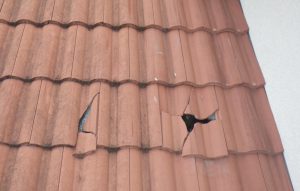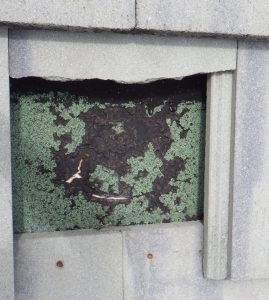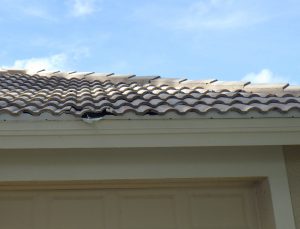Why Replace My Broken Roofing Tile?
Broken roofing tile can cause problems to your roof eventually. It may appear that nothing is happening, but over time problems can pop up.
A roof leak can develop due to the ultraviolet rays now weathering your tile underlayment and developing cracks. Usually this takes place in a section of the tile roof that you can’t see. If it were right in the front where you walk all the time, then it is easier to see and react. This can happen regardless of the type of tile roofing system that is installed on the roof.
Broken roof tile can allow water to enter the tile roofing system (between the tile underlayment and roofing tile). If the tile roofing system was designed with edge returns on the flashings, then the roofing tiles themselves are an important part of the waterproofing.
If the tile roofing system is a sealed tile underlayment system with a foam or mortar tile roofing attachment, then it is not so critical that the broken roof tile not allow water to enter the system. This will still allow the ultraviolet rays to prematurely break down the tile underlayment. It takes a while, but just a couple of years passing by would let this happen. Ask yourself this, “How often do I really look up there?”
Having us do a once over at least once a year will alert you to any broken roofing tiles that you may have not seen. Counting the broken roofing tiles is something we do when we provide the once over service. Cleaning the gutters and checking over the roof is a good practice to keep your roof maintained.
Paying attention to the type of tile underlayment that is installed when you do the tile reroof will help keep the roof in tact when broken tiles exist. Most tile roofing underlayment is not designed to be exposed to the elements past 6 months. Some have a rating of “as soon as possible”. Most of the tile underlayments that are installed today are the self-adhered underlayments, designed to be under roofing tile. Some are thin and others are thick with extra protection from the elements. We like to install SA Cap as a tile underlayment so then the exposure time is not so critical. This is the same material that we use on flat roofing that is designed to be exposed to the elements without anything on top of it.





